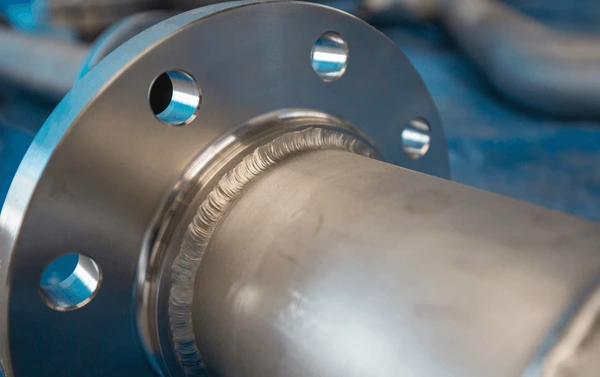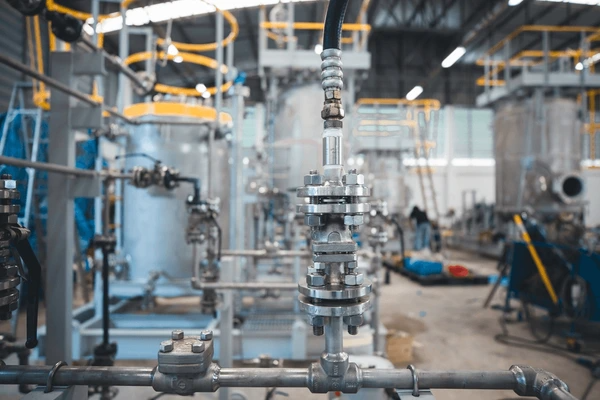
Passivation is a chemical process that enhances the corrosion resistance of metals by forming a protective oxide layer on their surface. This process is widely used in industries such as aerospace, medical, and manufacturing to improve the longevity and performance of metal components. By removing free iron and contaminants from the surface, this corrosion resistance treatment prevents rust formation and maintains the integrity of metals, particularly stainless steel, aluminum, and titanium. This article explores the passivation process, its benefits, industrial applications, and key considerations for effective metal protection.
What Is Passivation
What is passivation? Eureka Technical Q&A explains how this chemical process enhances corrosion resistance in metals, particularly stainless steel, by creating a protective oxide layer, improving durability in various applications.
Passivation is a controlled chemical treatment that removes iron particles, impurities, and oxidation-prone elements from metal surfaces. It typically involves acid treatments, such as nitric acid or citric acid, to create a thin, non-reactive oxide layer that shields the metal from corrosion.
Unlike coatings or plating, passivation is a natural reaction that enhances the inherent properties of the metal without altering its dimensions, appearance, or functionality.
How Passivation Works
- cleaning – the metal surface is cleaned using an alkaline or acid-based solution to remove oils, grease, and debris
- acid treatment – the metal is immersed in nitric acid or citric acid to dissolve free iron and contaminants
- formation of the passive layer – a protective chromium oxide or aluminum oxide film forms on the surface, preventing further oxidation
- rinsing and drying – the treated metal is thoroughly rinsed and dried to remove residual acids and enhance the stability of the passive layer
This process ensures that the metal remains corrosion-resistant and free from contamination, making it suitable for demanding environments.

Metals That Undergo Passivation
| Metal | Passivation Process | Protective Layer Formed |
|---|---|---|
| Stainless steel | Nitric or citric acid treatment | Chromium oxide |
| Aluminum | Anodizing (electrochemical passivation) | Aluminum oxide |
| Titanium | Acid treatment with nitric or hydrofluoric acid | Titanium oxide |
| Copper | Chemical oxidation or controlled patina formation | Copper oxide |
Benefits of Passivation
Passivation offers multiple advantages for industries that rely on corrosion-resistant materials.
Corrosion Resistance
By removing free iron and impurities, passivation prevents rust and oxidation, ensuring longer-lasting metal components.
Improved Cleanliness
Passivated surfaces are smoother and more resistant to contamination, making them ideal for medical instruments and food-processing equipment.
Enhanced Aesthetic Appearance
The process maintains the original luster and shine of metals while preventing discoloration over time.
Increased Component Lifespan
With a durable protective layer, passivated metals have extended service lives, reducing maintenance costs and replacements.
Environmentally Friendly
Unlike coatings and plating, passivation does not introduce toxic or heavy metal residues into the environment.
Industrial Applications of Passivation
Passivation is essential in various industries where metal durability and cleanliness are critical.
Aerospace and Aviation
Aircraft components undergo passivation to enhance corrosion resistance in high-altitude and extreme environments. Stainless steel fasteners, fuel systems, and turbine blades benefit from increased longevity and performance.
Medical and Pharmaceutical
Surgical instruments, implants, and medical devices require passivation to ensure biocompatibility and sterility. Passivation prevents contamination and corrosion, crucial for healthcare applications.
Food and Beverage Processing
Passivated stainless steel surfaces in food processing equipment prevent bacterial growth and contamination, ensuring compliance with food safety regulations.
Electronics and Semiconductor Industry
Microelectronics manufacturers use passivation to protect silicon wafers and circuit boards from oxidation and degradation.
Automotive and Marine
Car exhaust systems, fuel injectors, and marine components undergo passivation to withstand harsh environmental conditions and improve durability.

Passivation vs. Other Corrosion Protection Methods
| Feature | Passivation | Coatings (e.g., Zinc) | Electroplating | Anodizing |
|---|---|---|---|---|
| Protection type | Chemical oxide layer | Physical barrier | Metal plating | Electrochemical oxide layer |
| Affects metal dimensions | No | Yes | Yes | Yes |
| Corrosion resistance | High | Moderate | High | Very high |
| Common metals used | Stainless steel, aluminum, titanium | Steel, iron, copper | Various metals | Aluminum, titanium |
Common Challenges in Passivation
Despite its effectiveness, manufacturers must conduct passivation properly to achieve optimal results.
Improper Cleaning
Residual oils, greases, or organic contaminants can interfere with the passivation process, leading to an incomplete protective layer.
Inadequate Rinsing
If acids remain on the metal surface, they can cause staining, pitting, or chemical burns.
Incorrect Acid Concentration
The wrong acid strength or exposure time can lead to over-etching, weakening the material instead of protecting it.
Environmental Factors
Humidity, temperature, and exposure to aggressive chemicals influence passivation effectiveness, requiring periodic testing and maintenance.
How to Test Passivation Effectiveness
To verify the success of passivation, industries use various testing methods to ensure complete protection.
| Test Type | Purpose |
|---|---|
| Water break test | Checks for uniform hydrophobic surface |
| Copper sulfate test | Detects free iron contamination |
| High humidity test | Simulates corrosion resistance over time |
| Salt spray test | Evaluates long-term exposure to salt and moisture |
These tests help confirm that passivated metals meet industry standards for corrosion resistance.
FAQs
What metals can be passivated
Passivation is commonly applied to stainless steel, aluminum, titanium, and copper to improve corrosion resistance and cleanliness.
How long does passivation last
Passivation can last years, depending on the environment and maintenance of the metal component. Regular cleaning and re-passivation can extend its effectiveness.
Is passivation environmentally friendly
Yes, passivation is an eco-friendly process as it does not introduce heavy metals or harmful chemicals into the environment.
Can passivation improve the durability of stainless steel
Yes, passivation removes surface contaminants that can cause corrosion, significantly extending the lifespan of stainless steel components.
How do you know if passivation is successful
Laboratory tests like the copper sulfate test or salt spray test can confirm the effectiveness of passivation by ensuring no free iron remains on the surface.
Conclusion
Passivation is a critical process for enhancing metal durability, corrosion resistance, and cleanliness. Whether in aerospace, medical, food processing, or electronics, passivation plays a key role in maintaining high-performance metal components.
By understanding the benefits, industrial applications, and best practices, businesses can maximize the longevity and reliability of their metal parts, ensuring long-term protection against environmental damage.
To get detailed scientific explanations of Passivation, try Patsnap Eureka.


